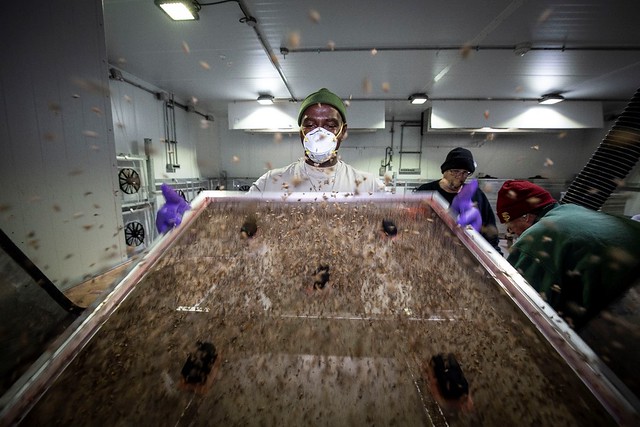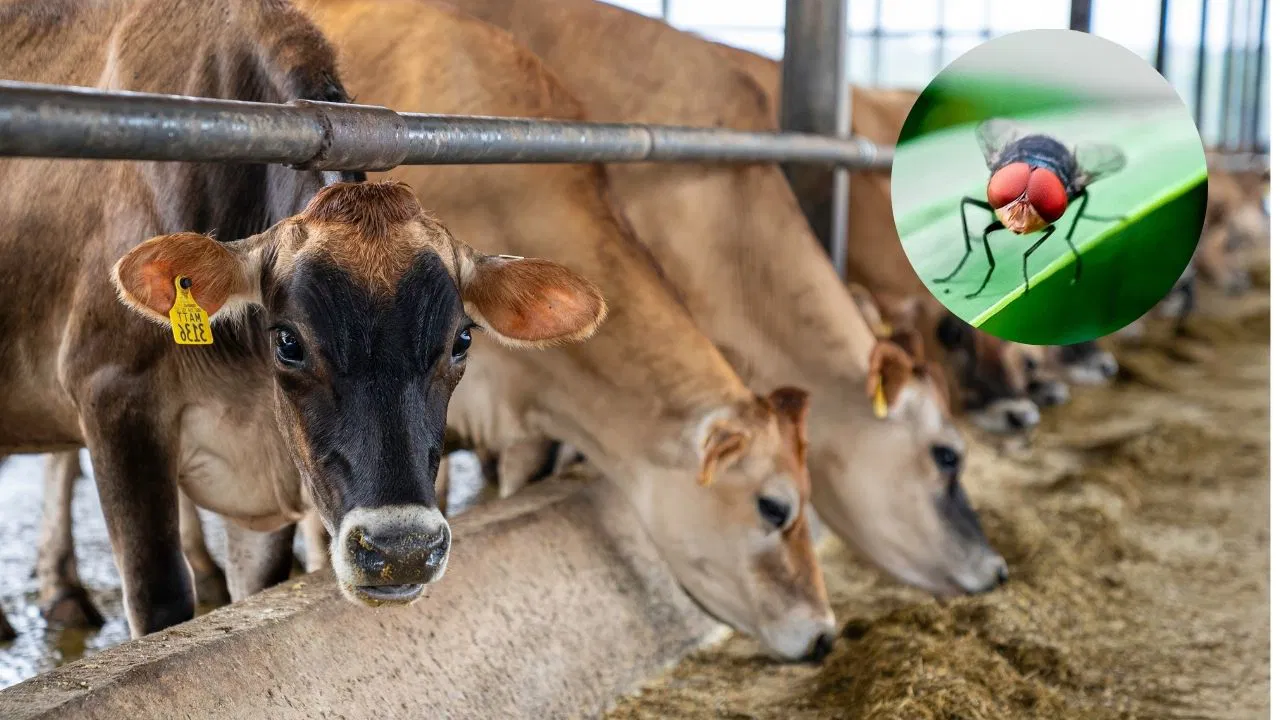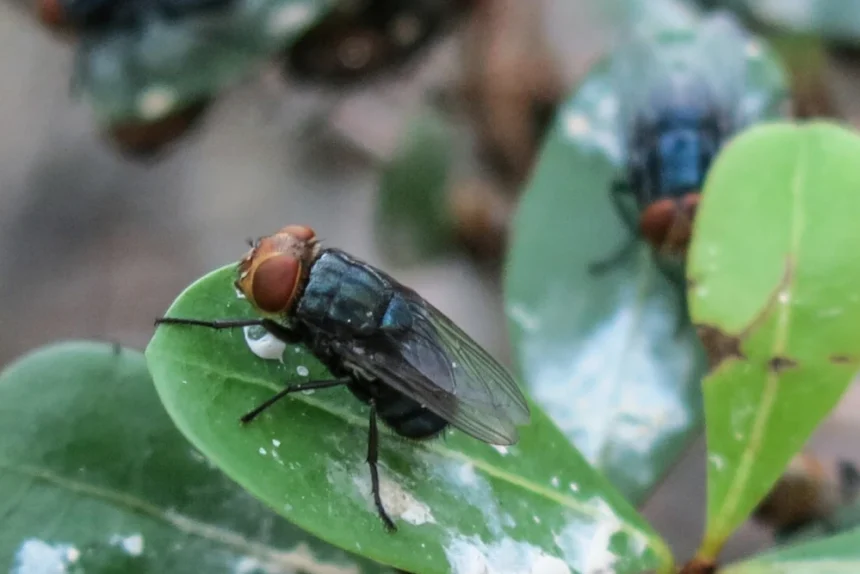TEXAS – The United States Department of Agriculture (USDA) has set plans in motion to release billions of sterile flies across Mexico and southern Texas in a fight against the New World Screwworm fly.
This parasite, which lays larvae that feed on the living flesh of warm-blooded animals, poses a real threat to American livestock, wildlife, pets, and, on rare occasions, people. A new production facility is scheduled to open in southern Mexico by July 2026, alongside a dispersal centre in South Texas. The USDA is expanding a proven approach to shield American agriculture from these dangerous pests.
The New World Screwworm fly (Cochliomyia hominivorax) causes more harm than most people expect. Unlike other flies whose larvae eat dead tissue, screwworm larvae attack living tissue, causing severe pain and sometimes fatal infections.
Vanessa Dellis, who leads the USDA’s Screwworm Programme, points out that screwworms can lay eggs in wounds as small as a tick bite. The larvae quickly dig in and feed, making wounds larger and leaving animals open to further infection.
In the early 1900s, screwworms cost the livestock industry around $20 million each year. They hit cattle, pigs, and other farm animals hard. Don Hineman, a retired rancher from Kansas, remembers the smell of cattle infected with screwworms from his youth, describing it as similar to rotting meat.
When screwworms reappeared in southern Mexico last year, especially in Oaxaca and Veracruz, cattle producers grew worried. The USDA responded in May 2025 by pausing imports of live cattle, bison, and horses from Mexico.
The economic risks are high. The National Cattlemen’s Beef Association says a major outbreak would hit the industry hard, costing ranchers money and pushing up meat prices. It would also put wildlife, pets, and even people at risk, raising wider public health concerns.

Using Sterile Flies to Stop the Spread
The USDA is returning to a method that has worked well before, called the Sterile Insect Technique (SIT). By breeding huge numbers of male screwworm flies, sterilising them with radiation, and releasing them into the wild, officials aim to break the breeding cycle.
Females that mate with sterile males lay eggs that do not hatch, causing the pest population to shrink over time. Denise Bonilla, a USDA official, describes this method as more effective and less harmful to the environment than pesticides.
The USDA is pouring money into these efforts. By the end of 2025, a new £6.7 million fly dispersal facility at Moore Air Base near Edinburgh, Texas, will open. This centre will be able to turn out up to 300 million sterile flies every week.
Another £16 million is earmarked to convert a fruit fly plant in Metapa, Mexico, into a screwworm factory. That site, expected to start producing by July 2026, will make 60 to 100 million sterile flies a week, with plans to ramp up to 400 million to help drive the pest south into South America.
How Fly Factories Work
Making billions of flies is no easy job. At a site run by the Panama-United States Commission for the Eradication and Prevention of Cattle Screwworms (COPEG) in Pacora, Panama, the process mixes hands-on effort with science.
The air smells faintly of decay as larvae eat a diet of milk, eggs, fibre, and cow’s blood. In the past, horse meat and honey were part of the mix, but modern operations now use dried eggs and molasses for the right nutrition.
Cassandra Olds, an entomologist at Kansas State University, says raising flies is straightforward if the females have the right cues to lay eggs and the larvae get enough food. Staff check temperature and humidity to keep the environment just right. Once grown, male flies are sterilised with radiation and released from planes over affected regions, a method that’s kept screwworm numbers down in Panama for years.
The SIT approach dates back to the 1950s and 1960s, when it helped rid the U.S. and much of Central America of screwworms. In Panama, the COPEG site makes up to 117 million sterile flies per week, holding a barrier at the Darién Gap to stop the pest from moving north. But new outbreaks in southern Mexico in 2024 showed that this shield is not foolproof.
Officials warn that constant vigilance is needed. USDA’s Burgess notes that threats thought to be under control can always return. The agency is also backing research into better traps, stronger lures, and genetically altered screwworms to improve the effort.

Industry and Local Reaction
The cattle sector supports the USDA’s strategy. Buck Wehrbein, president of the National Cattlemen’s Beef Association, says sterile flies are essential to protect U.S. herds. Texas Governor Greg Abbott has called the new facility in Texas a key step in safeguarding the state’s cattle.
However, groups like R-CALF insist the border should stay closed to Mexican cattle until screwworms are wiped out there.
The USDA plans to reopen the border for Mexican cattle on July 7, since there has been no sign of the pest moving north for eight weeks. Agriculture Secretary Brooke Rollins remains positive and highlights the readiness and cooperation behind the ongoing work.
The campaign against the New World Screwworm fly shows what can be achieved through science and collaboration. By breeding and releasing sterile flies, the USDA aims to shield the American cattle sector and wider ecosystem from a pest that has troubled farmers for years.
With new fly factories about to launch, there is hope of finally defeating this destructive insect, securing the safety of livestock and food supplies for the future.
Source: NBC News














